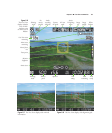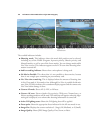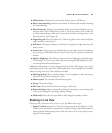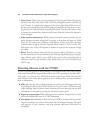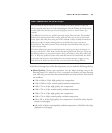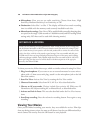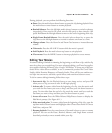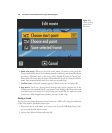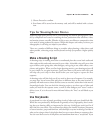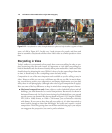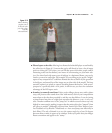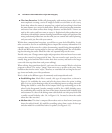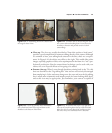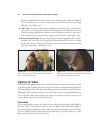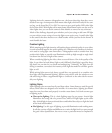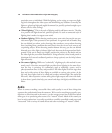
3. Choose Proceed to confirm.
4. Your frame will be stored on the memory card, and will be marked with a scissors
icon.
Tips for Shooting Better Movies
Producing high-quality movies can be a real challenge for amateur photographers. After
all, by comparison we’re used to watching the best productions that television, video,
and motion pictures can offer. Whether it’s fair or not, our efforts are compared to what
we’re used to seeing produced by experts. While this chapter can’t make you into a pro
videographer, it can help you improve your efforts.
There are a number of different things to consider when planning a video shoot, and
when possible, a shooting script and storyboard can help you produce a higher quality
video.
Make a Shooting Script
A shooting script is nothing more than a coordinated plan that covers both audio and
video and provides order and structure for your video. A detailed script will cover what
types of shots you’re going after, what dialogue you’re going to use, audio effects, tran-
sitions, and graphics. When you first begin shooting movies, your shooting scripts will
be very simple. As you gain experience, you’ll learn how to tell stories with video, and
will map out your script in more detail before you even begin to capture the first
sequence.
A shooting script will also help you if you need to shoot out of sequence. For example,
you may have several scenes that take place on different days at the same location. It
probably will make sense to shoot all those scenes at one time, rather than in the movie’s
chronological order. You can check the shooting script to see what types of video and
audio you need for the separate scenes, as well as what dialogue your “actors” need to
deliver (even, if, as is the case for most informal videos, the “lines” are ad-libbed as you
shoot).
Use Storyboards
A storyboard is a series of panels providing visuals of what each scene should look like.
While the ones produced by Hollywood are generally of very high quality, there’s noth-
ing that says drawing skills are important for this step. Stick figures work just fine if
that’s the best you can do. The storyboard just helps you visualize locations, placement
of actors/actresses, props and furniture, and also helps everyone involved get an idea of
what you’re trying to show. It also helps show how you want to frame or compose a shot.
You can even shoot a series of still photos and transform them into a “storyboard” if you
Chapter 6 ■ Live View and D-Movies 169



